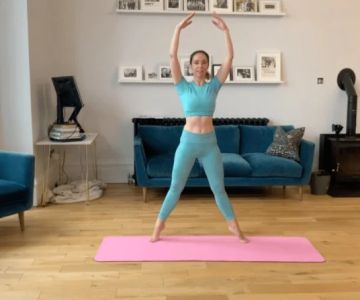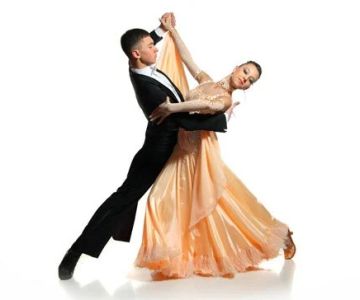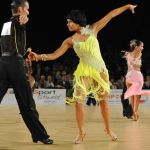
- 1. Common Mistakes in Belly Dance Fitness
- 2. Importance of Proper Posture in Belly Dance
- 3. Avoiding Overstraining During Practice
- 4. How to Build a Safe and Effective Belly Dance Routine
1. Common Mistakes in Belly Dance Fitness
Belly dance is a beautiful and dynamic fitness routine, but it’s easy to fall into bad habits that can hinder your progress. Understanding common mistakes and how to avoid them is key to enhancing your performance and preventing injuries. One of the most frequent mistakes is not fully engaging the core muscles, which are essential for control and stability in belly dance movements.
Another mistake many beginners make is overexerting themselves too quickly. Starting with overly complex moves without building foundational strength can lead to muscle strain. It’s important to focus on fluidity and control rather than speed or complexity.
2. Importance of Proper Posture in Belly Dance
Proper posture is the foundation of any effective belly dance routine. Keeping your back straight and shoulders relaxed while engaging your core muscles ensures that you move with grace and avoid unnecessary strain on your body. A common mistake is arching the back too much or hunching the shoulders, which can lead to discomfort or even injury.
To maintain good posture, imagine a string pulling you upward from the top of your head. This visualization will help you keep your spine elongated and your movements more controlled. Proper posture also improves balance and makes each dance move more fluid and precise.
3. Avoiding Overstraining During Practice
One of the biggest challenges when practicing belly dance is avoiding overstraining the muscles, especially for those who are eager to learn quickly. Trying to perform moves beyond your flexibility or strength level can lead to injuries such as muscle strains or joint pain.
To avoid overstraining, always listen to your body. If a movement feels uncomfortable or causes pain, stop immediately and adjust. Stretching and warm-ups are essential before each practice session to prevent injury and prepare the muscles for movement.
Personal Story: I once tried to learn advanced hip circles without proper warm-ups. I felt an immediate strain in my lower back, and it took several weeks to recover. Now, I make sure to incorporate stretching and core strengthening exercises into my routine to build a solid foundation before tackling more complex movements.
4. How to Build a Safe and Effective Belly Dance Routine
When building a belly dance fitness routine, it’s essential to start with the basics. Focus on strengthening your core and improving your flexibility, as these are the primary muscles used in most belly dance movements. Start with simple, slow movements to ensure you understand the proper form before progressing to faster, more intricate steps.
Step 1: Start with Core Strengthening
A strong core is crucial in belly dance, as it allows for more control over the torso and hip movements. Incorporate exercises like planks, crunches, and bridges to build strength in your abdomen and back muscles.
Step 2: Flexibility Training
Flexibility plays a significant role in executing smooth, graceful movements in belly dance. Dedicate time to stretching your hips, legs, and back, ensuring that you can move freely and comfortably during routines.
Step 3: Gradual Progression
It’s important to gradually increase the complexity of your movements as you build strength and flexibility. Start with basic hip circles and chest lifts before progressing to more advanced combinations of movements. This gradual progression will help you avoid injury and allow your body to adapt to the demands of belly dance.
Step 4: Listen to Your Body
Lastly, always listen to your body. Belly dance is a fun and rewarding practice, but pushing yourself too hard can lead to unnecessary injury. Take breaks when needed, stay hydrated, and don’t hesitate to consult a professional if you feel any discomfort.







 YMCA at First & Main4.0 (337 reviews)
YMCA at First & Main4.0 (337 reviews) Dancer's Dreams Inc4.0 (20 reviews)
Dancer's Dreams Inc4.0 (20 reviews) Starlight Dance Center4.0 (33 reviews)
Starlight Dance Center4.0 (33 reviews) Rochester School of Dance4.0 (25 reviews)
Rochester School of Dance4.0 (25 reviews) Encore Studio of Performing Arts4.0 (21 reviews)
Encore Studio of Performing Arts4.0 (21 reviews) El Camino Ballet5.0 (1 reviews)
El Camino Ballet5.0 (1 reviews) Do Schools in France Have Dances? Discover French Dance Traditions
Do Schools in France Have Dances? Discover French Dance Traditions Do They Have High School Dances in Austria? Discover the Maturaball Tradition
Do They Have High School Dances in Austria? Discover the Maturaball Tradition Why Jazz Dance Is Popular: A Step by Step Guide for Beginners
Why Jazz Dance Is Popular: A Step by Step Guide for Beginners Pole Dance Step by Step Guide: Master the Basics and Advanced Moves
Pole Dance Step by Step Guide: Master the Basics and Advanced Moves Ballroom Dance to Burn Calories – Effective Tips and Dance Styles
Ballroom Dance to Burn Calories – Effective Tips and Dance Styles Tap Dance for Kids – Complete Guide: Learning, Benefits, and More
Tap Dance for Kids – Complete Guide: Learning, Benefits, and More